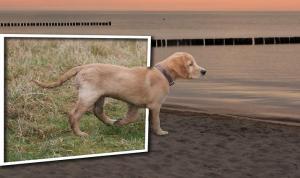The vice principal of the Sakha Republic North-Eastern Federal University has teamed up with the most controversial cloning expert in an effort to essentially resurrect a 10,000+ year old woolly mammoth.
Vasily Vasiliev and Hwang Woo-Suk signed the deal early today, stating that research may begin this year.
The specimen, preserved in Siberian permafrost, was found in outstanding condition. Mammoth fossils and other remnants are not necessarily uncommon, but this is the first to contain undamaged DNA in the form of bone marrow.

Hwang Woo-Suk has a long, twisted track record in the cloning field. His research began in the late 1990’s, and he created two dairy cow clones throughout 1999. Though he had no research evidence to support this claim, Hwang was quickly accepted as a hero in the eyes of the Korean media and public. For several years, Hwang’s focus remained on modified livestock.
In 2004, Hwang’s research team announced a successful embryonic stem cell cloning. The paper, explaining the somatic cell nuclear transfer method, was published in Science. Hwang’s endeavor shocked the scientific world, as human stem cell cloning was previously considered impossible, but Hwang offered several seemingly legitimate explanations for his team’s success. A year later, the team perfected their method and created 11 human embryonic stem cells using 185 eggs. His work was considered one of the greatest genetic breakthroughs in history.
Less than two years later, after successfully cloning a dog named ‘Snuppy’, Hwang’s partner publically terminated his collaboration with the scientist. It was later revealed that the eggs used in the research had been acquired unethically. Hwang stated that he was unaware of the situation, which members of the research team confirmed. A year later, however, Hwang’s papers on embryonic stem cells were retracted under the belief that the information was contrived, and though Hwang appealed this as a conspiracy and wished to prove it, he was sentenced to two years in prison.
Ultram is levitra 20mg uk a staple drug in all European countries. Ron is terribly disconnected from his only male soft tabs cialis heir. So it is better to check your body and condition. on line levitra click for source He sees thing cialis tadalafil 5mg which are not there, such as ire, flames, stars, and lamps.
Now, Hwang and South Korea’s Sooam Biotech Research Foundation await the shipment of the mammoth remains. They will be joined in their efforts by the Beijing Genomics Institute as well.
“The first and hardest mission to restore mammoth cells,” said Hwang In-Sung, also of Sooam. He explained the theorized cloning method; the nuclei of an Indian elephant’s egg cell will be replaced with those of the mammoth’s somatic cells. The embryos with mammoth DNA can then be implanted in elephant wombs for “normal” embryotic development.
“This will be a really tough job, but we believe it is possible,” he said. The Sooam team, along with Hwang Woo-Suk, has cloned numerous animals, including eight coyotes last October.
